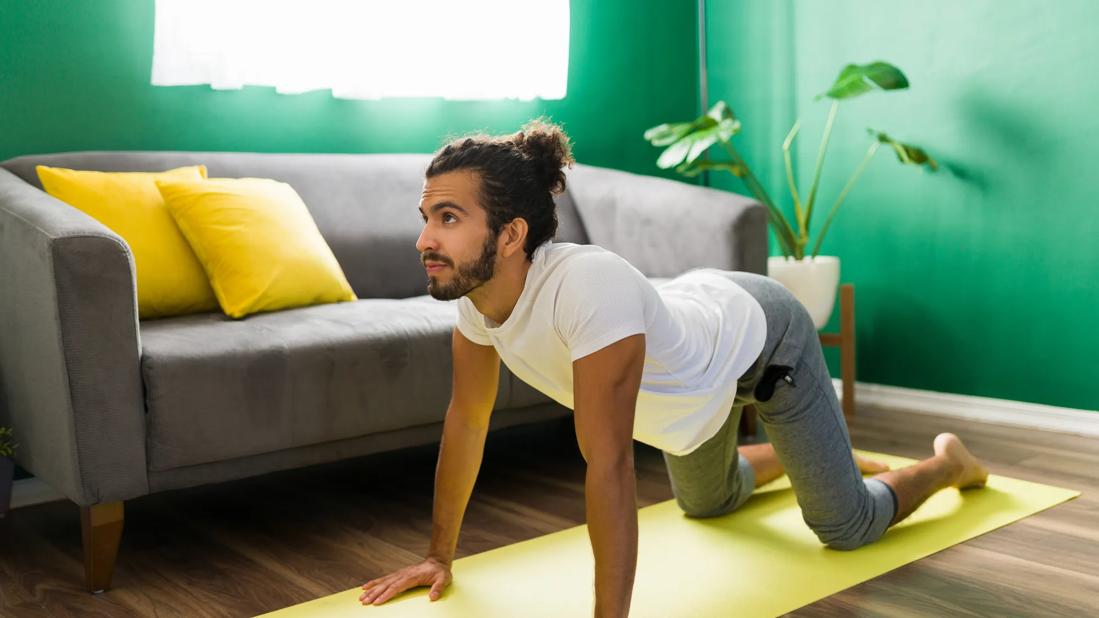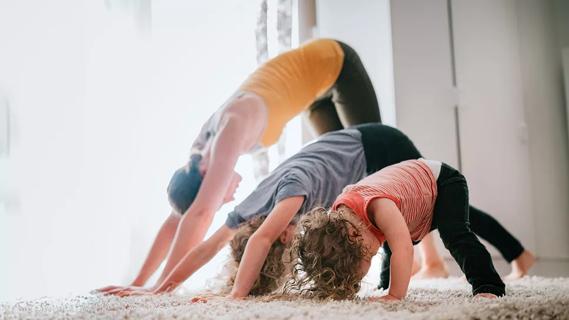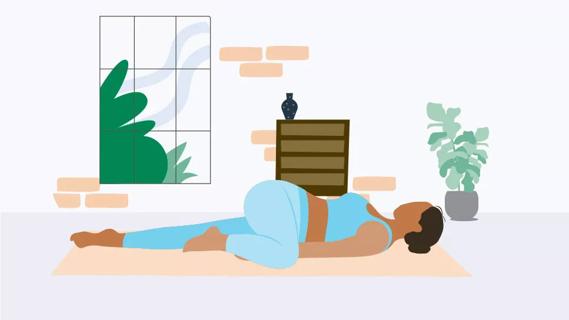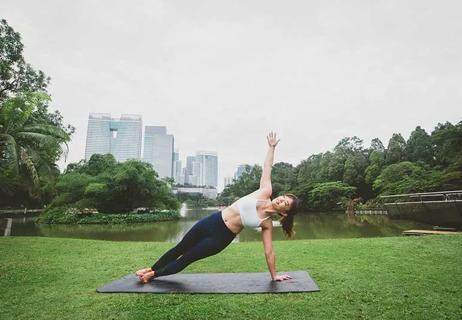Somatic yoga focuses on the sensation and experience of movement — not striking perfect poses

Somatic yoga is a yoga practice that employs a specific type of mindful approach to movement called “somatics.” It prioritizes thoughts, feelings and body awareness over form. The process is what matters, not athletic proficiency.
Advertisement
Cleveland Clinic is a non-profit academic medical center. Advertising on our site helps support our mission. We do not endorse non-Cleveland Clinic products or services. Policy
The concept of somatics has been around for centuries. But as a field of study, it’s fairly young. Within somatics, there are lots of different schools, styles and philosophies — just like there are lots of different types of yoga. We’re focusing on somatic yoga in general, not a specific school or theory.
So, how do you actually do somatic yoga — and what can you get out of the activity? Let’s find out from exercise physiologist David Creel, PhD.
You may be wondering, isn’t yoga already somatic?
Traditional yoga — the kind that’s been practiced for millennia — is definitely somatic. It’s rooted in Southeast Asian religions and culture. The goal is to exert control over your body and mind, thereby opening yourself up for spiritual enlightenment.
Western yoga practices don’t always hold on to those spiritual and somatic elements. So, your yoga may or may not be somatic. It depends on the type you’re doing and the instructor.
“Some yoga instructors make their classes more like a strength training workout,” Dr. Creel observes. “If you want to practice in a group or studio setting, look for a class where the instructor is most focused on your thoughts, feelings and breathing. There shouldn’t be a lot of judgment of your movements and poses, as long as you’re doing them safely.”
Advertisement
Any yoga pose or sequence can be somatic if you approach it with the right mindset. Here are five examples to get you started.
As you perform them, ask yourself: Where is your energy and how is it flowing through your body? If something feels tense or tight, that’s neither good nor bad. It simply is. Try using your mind and breath to relax the area. Listen with respect and curiosity to what your body tells you.
Remember: Your goal is to build a connection between your mind and body.

Savasana — commonly referred to as corpse pose — is a relaxation pose common in yoga practices. You simply lie on the floor or, if it’s more comfortable, in your bed. Your arms and legs should be fully extended.
In somatic yoga, instructors often put students in savasana to guide them through a body scan meditation. You can do this yourself by following these steps:

Balasana — or child’s pose — is a restorative pose that offers a nice, deep stretch. If the stretch is too deep, rest your forehead against a pillow or block.
Consider skipping this pose — or checking with your provider — if you’ve got knee, heart or lung issues. If you’re pregnant, you may need to widen your knees to accommodate your baby bump.

Upavistha jathara parivartanasana — also known as seated windshield wiper pose — involves sitting on the floor while gently twisting and stretching your hips.
Advertisement
If you’re struggling to stay balanced or find getting your knees to the floor is painful, use rolled-up towels or a blanket for extra support.
If you’ve had a recent hip injury or surgery, this may not be the best pose for you. Stop if you feel pain in your hip or knee.

Setu bandha sarvangasana — or bridge pose — is a supine pose, meaning you start by lying on your back.
Advertisement
You can also modify this pose in several ways, by:

Chakravakasana — or cat-cow pose — is a yoga sequence where you alternate between arching (bitilasana) and rounding (marjaryasana) your back. It’s a great way to stretch your spine. If getting onto all fours isn’t safe or comfortable for you, you can also practice this sequence in a chair.
Somatic yoga comes with all the standard benefits of a traditional yoga practice. Somatic yoga may:
Advertisement
Learn more about our editorial process.
Advertisement

This gentle yoga stretch supports your spine, strengthens your core and calms your mind

Focus on inhaling and exhaling through 12 steps of a complete sequence

Stand tall and feel grounded with this foundational yoga pose

This transitional and restorative yoga pose provides a full-body stretch

Balasana, or child’s pose, is a restorative full-body yoga technique

Kids’ yoga can help kiddos become more aware of their physical, mental and emotional selves

This mindful practice is designed to give you mental and physical relaxation

You can work more than your abdominals

The ‘sunshine vitamin’ is found naturally in some fish and is added to other foods

Autism and ADHD often go hand in hand, giving rise to the term AuDHD

The Yuzpe regimen is less effective than other forms of emergency contraceptives, and it’s associated with more side effects